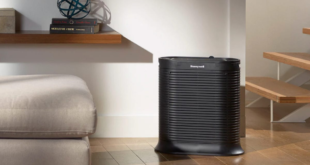My evaluation process for a home espresso machine is similar to how I test standard drip coffee makers. First, I hand-wash and dry all removable parts and accessories. For most espresso makers, that includes the filter basket, metal portafilter inserts, water tank and so on. Next, I run one brewing cycle with just hot water to flush away any residual material from manufacturing.
Most automatic espresso machines, save for fancy super-automatic models, lack an integrated coffee grinder and I prefer testing espresso machines with freshly ground coffee, not preground coffee, so I supply my own grinder: the Breville Smart Grinder Pro. I chose this conical burr grinder for two reasons. First, it’s calibrated more for espresso than for drip or other brewing styles. That means it produces a coffee bean grind that’s quite fine. Second, its grind size is consistently uniform. Both factors are critical for a proper espresso brewing process.
To pull shots, I start with the suggested method outlined in a given machine’s product manual. Usually that covers the amount of coffee grounds expected per shot, along with any guidelines regarding coarseness level. Likewise, I follow tamping instructions (light, medium or hard tamp) if the manual provides them.
Whenever possible, I brew double shots of espresso for all my test runs. I make sure to record the weight of the grounds I use, plus the weight of espresso for each shot I pull. This data, along with readings from a portable refractometer, allows me to calculate two important percentages: total dissolved solids and extraction percentage.
Just as for any coffee brew, the ideal extraction percentage for espresso is a range between 18% and 22%. This yields a balanced cup, assuming you perform an even and efficient extraction of coffee compounds from your grounds (both flavor and caffeine).
Not many home espresso machines can brew quality shots. This one was pulled from the Breville Barista Express.
If you over-extract, you run the risk of leaching out unpleasant flavors (bitterness) after the good. On the opposite end of the scale, under-extracted brews tend to have undeveloped flavors. Lacking sugars and other caramelized organic chemicals, these shots will taste sour, weak and watery.
Unlike a cup of drip coffee, barista-quality espresso should be concentrated. Excellent drip typically has a TDS percentage of 1.3% or 1.4%, great espresso has a much higher percentage. The Breville Barista Express, for example, produced shots with TDS percentages as high as 12.4%.
The shots I pulled were balanced, with an extraction of 18.6%. The test coffee beans I use are the same variety I employ for standard coffee makers — Costco Kirkland Colombian. It’s a medium-dark roast suitable for brewing espresso as well.
Many espresso machines have steaming wands for frothing milk. The Breville Bambino makes steaming milk especially easy.
Lastly, I try my hand at milk frothing with each coffee machine equipped with a steam wand. I record the overall experience with the steam wand, whether the process is a snap, a tricky chore or somewhere in between.
You can use steamed milk to create cafe-style espresso drinks like lattes and cappuccinos.
 synnbiob
synnbiob

